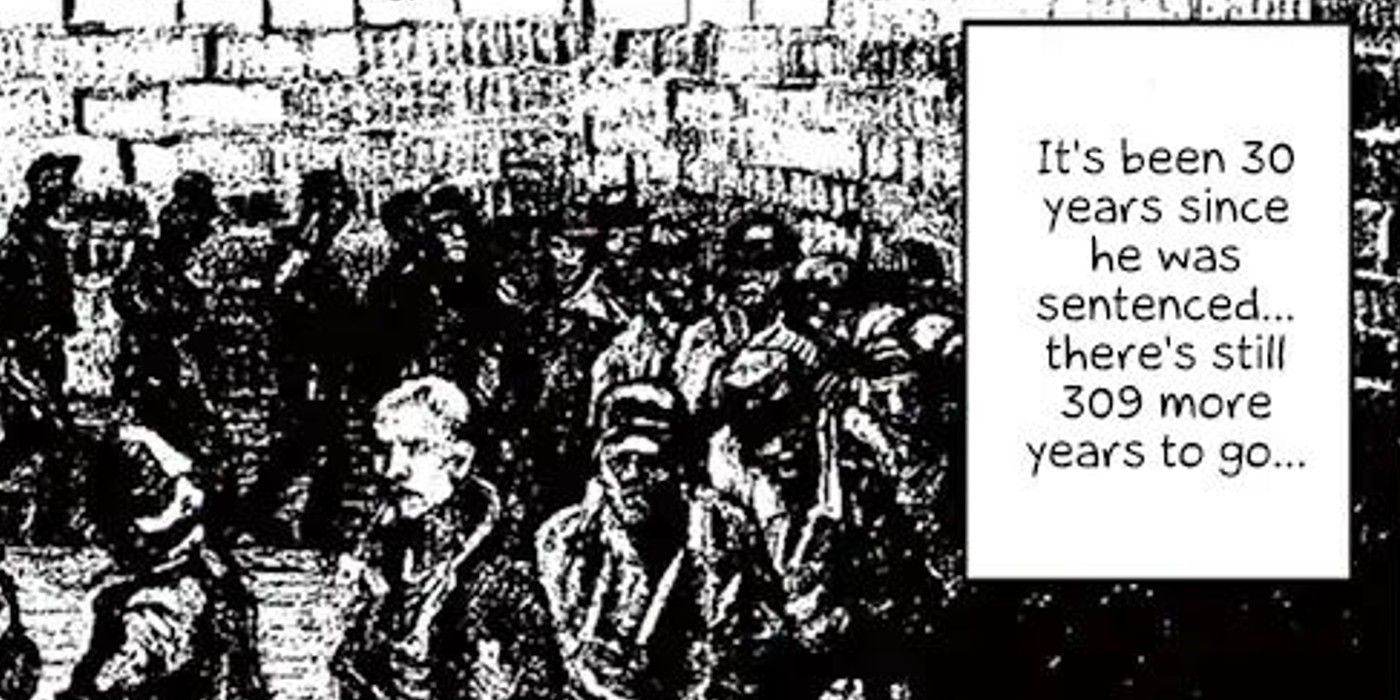Warning! Spoilers ahead for Penal Servitude 339 Years chapter 3!
While many mangaka jump on the reincarnation manga train as the fad continues to grow in popularity, others steer clear entirely. More interesting though are those who choose to deconstruct it entirely like Tomoka Ise, creator of Penal Servitude 339 Years.
It's common or most reincarnation manga to explore the utterly absurd as exemplified by That Time I Got Reincarnated as a Slime, which is a series about exactly what it sounds like. Other more obscure manga have characters who are extremely smart getting reincarnated into a character from the past and using their expertise from their previous life to find incredible amounts of success in their new reality. It's even more fascinating when they're reincarnated as babies and try to act as normally as possible so as not to arise suspicion.
But Penal Servitude 339 Years explores the many failings of a society that not only believes in reincarnation on a spiritual level but created a legal system that actually takes it into account by divvying out punishments that can be passed down from the original perpetrator to all of their subsequent reincarnations until the debt to society is paid in full. The story follows the reincarnations of Haro Ahinsa who must all collectively serve his 339-year sentence as they struggle with their unfair predicament. Each reincarnation has their own personality and therefore contends with their fate differently, whether they are devout, heretics, or mentally handicapped. The faithful wrestle with the conundrum of repenting for their sins when they don't even remember committing them. The blasphemers fight the system only to their own detriment. Then there are those who are unable to grasp the concept and attempt to understand it but die in their failed efforts to live the life that's expected of them. The unfairness of the entire situation is only exacerbated by the arbitrary ways in which the law attempts to find the reincarnations of Haro Ahinsa usually by identifying a baby who shares the same basic facial structure or moles.
Beyond the reincarnated versions of Haro Ahinsa, Penal Servitude 339 Years finds other ways to present this odd world creatively. One of the more innovative ideas are crimes that perpetrators commit based solely on the belief in reincarnation. Some try to steal the inheritances of wealthy families by claiming to be their reincarnated heirs. Others are convicted by the sheer number of women they trick into believing they were lovers in a previous life. A few even alter records of their own reincarnations to benefit themselves.
Penal Servitude 339 Years is a breath of fresh air in an industry that's become inundated with reincarnation manga. Rather than taking the easy way out by having his main character reincarnate into something outrageous like a slime monster, mangaka Tomoka Ise deconstructs the entire genre by focusing on the injustices from a societal and judicial angle without even confirming or denying the existence of reincarnation. What's more, Ise got his work serialized by winning first prize in Ura Sunday's tournament. He deserved it exceedingly.


